Description
Ascentta, Inc. offers a range of high-performance fiber optic circulators designed for efficient signal transmission. Their three-port circulators transmit signals from port 1 to port 2 and from port 2 to port 3 simultaneously.
These compact devices are widely used in optical sensing systems with fiber gratings and other reflective components. Ascentta also provides multiport circulator modules. The high performance circulator can be tuned on 532nm, 635nm, 785nm, 810nm or customer specified center wavelength in order to optimize the applications.
Ascentta Single Mode Polarization Insensitive Fiber Circulator (532nm, 635nm, 785nm, 810nm)
Specifications
| Type Of The Device: | Circulator |
|---|---|
| Operating Wavelength: | 635 nm |
| Max Power: | 0.1 W |
| Min Isolation: | 23 dB |
| Insertion Loss (All SOP) Max.: | 2.3 dB |
| Return Loss Min.: | 45 dB |
| Directivity (1→3, Or 3→1): | 40 dB |
| Fiber Length: | 2.0 m |
| Operating Temperature: | +10 to +50 ℃ |
| Storage Temperature: | 0 to +60 °C |
Features
- High-performance fiber optic circulators for efficient signal transmission
- Three-port design for simultaneous signal routing
- Compact and reliable construction
- Suitable for use in optical sensing systems with fiber gratings and reflective components
Applications
- Optic communication networks
- Fiber optic sensing applications
- Optical signal processing
- Testing and Instruments
- Research and development
Frequently Asked Questions
What is the product type?
The product is a 3-Port Optical (TGG Type) Circulator. It is a single-mode type, which means it can only carry one mode or type of light at a time.
What are the wavelengths this product supports?
The product supports a range of wavelengths which include: 532nm, 635nm, 650nm, 780nm, 850nm, 980nm, 1030nm, and 1060nm. These values represent the operational wavelength range that the circulator can handle.
What is the transmitting direction of this product?
The product is designed to transmit in the direction from port 1 to port 2, and from port 2 to port 3. This indicates the sequence of ports in which the light circulates.
What is the typical and minimum isolation in dB?
The product provides a typical isolation of 23 dB for the wavelengths 532nm, 635nm, and 650nm, and 25 dB for 780nm and 850nm, and 27 dB for 980nm, 1030nm, and 1060nm. The minimum isolation is 20 dB for the wavelengths 532nm, 635nm, and 650nm, and 21 dB for 780nm and 850nm, and 22 dB for 980nm, 1030nm, and 1060nm. Isolation refers to the ability of the device to prevent light from returning to the source.
What is the maximum insertion loss in dB?
The maximum insertion loss for 532nm is 2.5 dB, for 635nm and 650nm it's 2.3 dB, and for 780nm, 850nm, 980nm, 1030nm, and 1060nm, it's 1.5 dB. Insertion loss is the reduction of signal power resulting from the insertion of a device in a transmission line.
What is the maximum Polarization Dependent Loss (PDL) in dB?
The maximum PDL for all the mentioned wavelengths is 0.2 dB. PDL is the difference in attenuation of two different polarized light waves in a system.
What is the maximum Polarization Mode Dispersion (PMD) in ps?
The maximum PMD for all the mentioned wavelengths is 0.2 ps. PMD is a form of modal dispersion where two different polarizations of light in a waveguide, which ideally should travel at the same speed, travel at different speeds.
What is the minimum return loss in dB?
The minimum return loss for all the wavelengths is 45 dB. Return loss is a measure of how much of the light is reflected back towards the source.
What is the minimum directivity in dB?
The minimum directivity for all the wavelengths is 40 dB. Directivity is a measure of the ability of the device to concentrate power flow in a particular direction.
What is the maximum optical power handling in mW?
The maximum optical power handling for 532nm is 50 mW, for 635nm and 650nm it's 100 mW, for 780nm and 850nm it's 150 mW, and for 980nm, 1030nm, and 1060nm it's 250 mW. This represents the amount of optical power that the circulator can handle safely.
What are the operating and storage temperature ranges?
The operating temperature range is from 10℃ to 50℃, and the storage temperature range is from 0℃ to 60℃. This indicates the temperatures within which the device is designed to operate or be stored without any loss in its functionality.
How do connectors affect the product?
The product specifications provided are for parts without connectors. Adding connectors can affect the Insertion Loss (IL), Return Loss (RL), and Polarization Dependent Loss (PDL).
What is SOP?
SOP stands for State Of Polarization. This is a description of the polarization state of the light in an optical signal. It can be affected by various factors such as temperature, stress, and wavelength.
How to place a custom order?
Contact Ascentta with your custom configuration needs. The ordering information includes the port (VCIR3=3-Port), wavelength (e.g., 532=532nm), fiber type (e.g., S=Single-Mode), cable type, fiber length, connector, maximum power, and package. Other configurations can be specified.
Similar Products

Ascentta High Directivity Ultra-broadband 3-port Optical Circulator
Ascentta

Ascentta Isolator Hybrid: Tap Coupler + Isolator
Ascentta
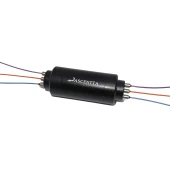
Ascentta’s Optical TGG-Type Isolator Array
Ascentta

Ascentta Isolator-WDM Hybrid (IWDM)
Ascentta

Isolator Array (1310, 1480, 1550, 1590nm)
Ascentta

4-channel Circulator Array
Ascentta
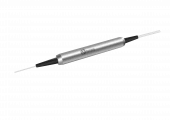
1550nm Polarization Maintaining Isolator/Wavelength Division - PMIWDM Series
GKER Photonics
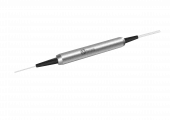
1550nm Polarization Maintaining Isolator/Wavelength Division Multiplexer Hybrid
GKER Photonics
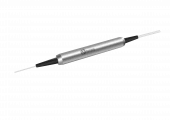
1530 -1580nm Polarization Maintaining Isolator/Wavelength Division Multiplexer Hybrid - PMIWDM Series
GKER Photonics

1030nm High Power Polarization Maintaining Isolator
GKER Photonics
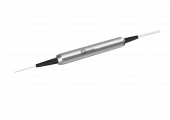
1530 -1580nm Polarization Maintaining Isolator/Wavelength Division Multiplexer Hybrid
GKER Photonics
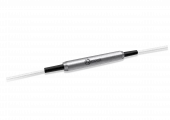
C Band Red/Blue Wavelength Division Multiplexer
GKER Photonics
Thank You!
Your inquiry has been received.
Create an account by adding a password
Why create an account?
- Auto-complete inquiry forms
- View and manage all your past messages
- Save products to your favorites
- Close your account anytime — no hassle
